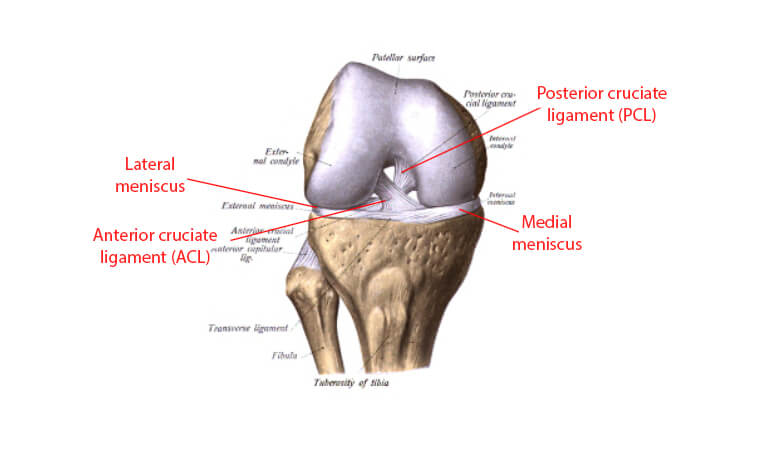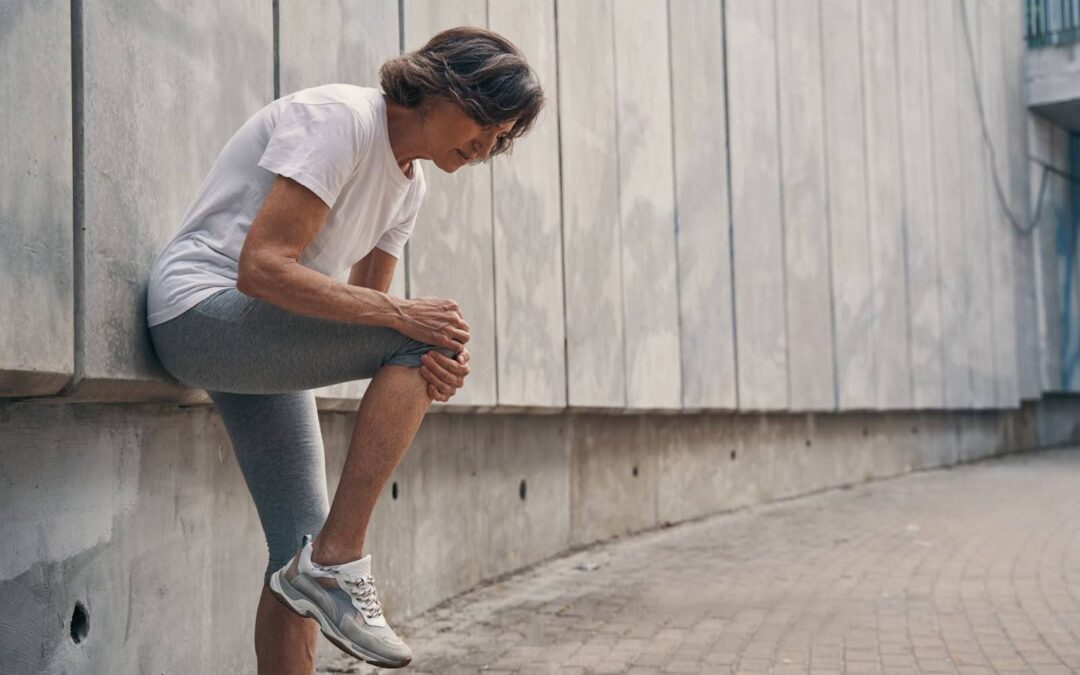Knee Sprain: Understand, Prevent, and Relieve This Intense Pain
A knee sprain is an unfortunately common injury, especially among athletes, due to the sudden movements and twists involved. It results from trauma that affects the stabilizing ligaments of the joint. The knee depends on the integrity of these structures to function correctly. Understanding what a sprain is, how to recognize it, how to treat it effectively, and—most importantly—how to prevent it is essential for optimal recovery and a safe return to your activities.
What Is a Knee Sprain?
A knee sprain is an injury to one or more ligaments in the joint, usually following trauma. Ligaments are rigid, fibrous structures that connect bones and ensure the knee’s stability. The knee contains four main ligaments:
- Two collateral ligaments
- Two cruciate ligaments
The severity of a sprain can vary significantly depending on the type of injury and the ligaments affected. There are three levels of severity:
- Mild: A simple stretch of a ligament without significant tearing.
- Moderate: A partial tear of some ligament fibers.
- Severe: A complete rupture of a ligament, sometimes accompanied by a bone avulsion.
Isolated injuries to the collateral ligaments are generally less severe. However, injuries to the cruciate ligaments—especially the anterior cruciate ligament (ACL)—are always considered serious, as they can lead to knee instability. The knee is a complex joint made up of the femur, tibia, and kneecap (patella). In addition to ligaments, other critical structures contribute to its stability and function, including cartilage, menisci, the joint capsule, synovial bursae, as well as surrounding muscles and tendons.
What Are the Symptoms of a Knee Sprain?
The signs of a knee sprain can vary in intensity and are not always proportional to the severity of the injury. A mild sprain can sometimes be more painful than a severe one. Some symptoms that should alert you and warrant prompt medical attention include:
- A popping or cracking sound or sensation at the time of the injury
- Sharp, intense pain, often described as tearing
- Swelling of the knee
- A feeling of the knee giving way or shifting to the side
- The knee locking or becoming stuck
- A possible visible deformity of the joint
- Bruising along the path of the collateral ligaments
- A sensation of warmth around the knee
These symptoms may be accompanied by an inability to put weight on the leg or to walk. If you cannot walk or bear weight on your foot or if your knee feels unstable, it is essential to seek medical help immediately.

How Does a Knee Sprain Occur?
The pain from a sprain is directly linked to injuries of the ligaments and potentially adjacent structures such as the menisci or joint capsule. A knee sprain usually occurs after trauma:
- Direct trauma is less common and is caused by a direct blow to the knee, such as an impact against a dashboard during a car accident.
- Indirect trauma is more common and often results from abnormal or excessive movements of the joint, such as hyperextension (e.g., kicking into the air while playing football), where the knee is forced too far into extension, potentially affecting the meniscus. This type of trauma can also result from a twisting movement or a fall where the foot is planted and the knee twists. These motions place excessive strain on one or more ligaments, causing them to stretch or tear.
How Is a Knee Sprain Diagnosed?
Diagnosing a knee sprain is primarily a clinical process. The healthcare provider gathers information about the circumstances of the injury and the symptoms that have been experienced. The clinical exam includes:
- Analyzing the patient’s gait
- Assessing knee mobility and detecting abnormal movement
- Checking for fluid accumulation in the joint
- Looking for bruising or hematoma
Additional tests such as X-rays or MRI scans may be ordered to refine the diagnosis or rule out other injuries:
- MRI is beneficial for evaluating internal ligament injuries such as those involving the ACL.
- In some cases, ultrasound may be used, particularly to visualize sprains of the collateral ligaments.
A medical consultation is essential. If symptoms include a popping sound, intense pain, knee locking, instability, or visible deformity, see a doctor promptly. Suppose the discomfort is moderate and the symptoms are not alarming. In that case, you may wait a day or two while applying immediate first-aid measures but seek medical attention if symptoms persist. 
How Long Does a Knee Sprain Last?
The healing time for a knee sprain varies significantly depending on the severity of the injury and its management. In general, a gradual return to sports activities occurs:
- After 2 to 4 weeks for a mild sprain (Grade I)
- After 4 to 8 weeks for a moderate sprain (Grade II)
- After 8 to 16 weeks for a severe sprain (Grade III)
Overall, a sprain can heal in 4 to 6 weeks; however, recovery may take up to 3 to 4 months, depending on the severity of the injury, the treatment received, and the patient’s medical history. Seeing a physiotherapist within the first 72 hours after the injury can help optimize recovery and ensure appropriate care.
Treatment for a Knee Sprain
Treatment for a knee sprain is personalized and depends on the type of sprain and the patient’s individual needs and expectations. In the event of a suspected knee sprain, immediate first-aid measures are crucial to limit the damage. The R.I.C.E. protocol (Rest, Ice, Compression, Elevation) is typically used:
- Ice: Apply ice or cold water to reduce inflammation and pain. Use a clean cloth to prevent ice burns, and repeat the process every 2 to 4 hours.
- Rest: Stop the activity immediately and avoid putting weight on the injured leg to prevent worsening the injury.
- Elevation: Raise your leg above heart level to reduce swelling.
- Compression: Apply a bandage without tightening it too much, or use a brace or knee support to stabilize the joint.
Depending on severity:
- For a mild sprain, the injury often heals naturally with the R.I.C.E. protocol and possibly a brief course of physical therapy.
- For a moderate sprain, physiotherapy plays a more significant role, including rehabilitation to improve joint control and strengthen muscles.
- For a severe sprain, surgery is often required to repair a torn ligament, especially the anterior cruciate ligament (ACL). The decision to undergo surgery depends on the patient’s level of athletic activity, professional demands, and the risks associated with leaving it untreated. Surgery is typically followed by long-term physical therapy.
In physiotherapy, the goals are to ensure optimal healing, restore proper mobility and strength, and support the recovery process to limit complications. Treatments may include:
- Manual therapy and joint mobilizations
- Targeted exercises to strengthen the knee muscles and improve proprioception (the body’s sense of joint position)
Sprains often impair proprioception, which is crucial for preventing re-injury. This must be retrained explicitly during rehabilitation. Medication may also be used to relieve pain and reduce inflammation. The return to sports or pre-injury activities must be gradual, closely following the recovery timeline and rehabilitation program recommended by the physiotherapist to reduce the risk of recurrence.
3 Tips to Prevent a Knee Sprain
Prevention is essential, both to avoid a first sprain and to prevent recurrences.
1. Muscle Strengthening and Proprioception:
Strengthening the knee muscles and improving proprioception — the body’s ability to sense its position in space — through targeted exercises is crucial for stabilizing the joint and reducing the risk of recurrence. Physiotherapy plays a key role in this process.
2. Physical Preparation:
For high-risk activities like skiing, proper physical preparation is strongly recommended. Two months before heading to the mountains, engage in physical activities to strengthen your thighs and improve your cardiovascular endurance:
- Walk at least one hour a day,
- Avoid elevators and use the stairs,
- Swim, as swimming strengthens all the muscles in the body,
- Do daily gymnastic exercises,
- Run for 40 minutes two to three times a week.
3. Respecting Recovery Time:
After a sprain, carefully follow the recovery and rehabilitation timelines recommended by your physiotherapist before resuming your sports activities. This helps to limit the risk of recurrence and complications.
The Importance of Seeing a Specialist, Such as a Physiotherapist or a Doctor
Self-diagnosing a knee sprain at home is difficult, if not impossible. Only a healthcare professional is qualified to determine the nature and exact extent of the injury. At the first sign of significant symptoms or in case of doubt, consulting a doctor or physiotherapist is essential. These specialists can:
- Make an accurate diagnosis through clinical examination and, if necessary, additional tests such as MRI,
- Rule out other potential injuries, such as a fracture,
- Assess the severity of the sprain and determine the most appropriate treatment,
- Guide you through the rehabilitation process, particularly with physiotherapy, which is essential for optimal healing and regaining full knee function. Physiotherapy helps restore flexibility, mobility, strength, and proprioception.
- The use of orthotics or a knee brace may be recommended during rehabilitation or when returning to high-risk activities to provide temporary stability and prevent recurrence.

Conclusion
Whether mild or severe, a knee sprain requires careful attention and treatment. Consulting a specialist ensures a correct diagnosis, appropriate treatment, and effective rehabilitation, leading to a safe return to your daily and athletic activities.


Recent Comments